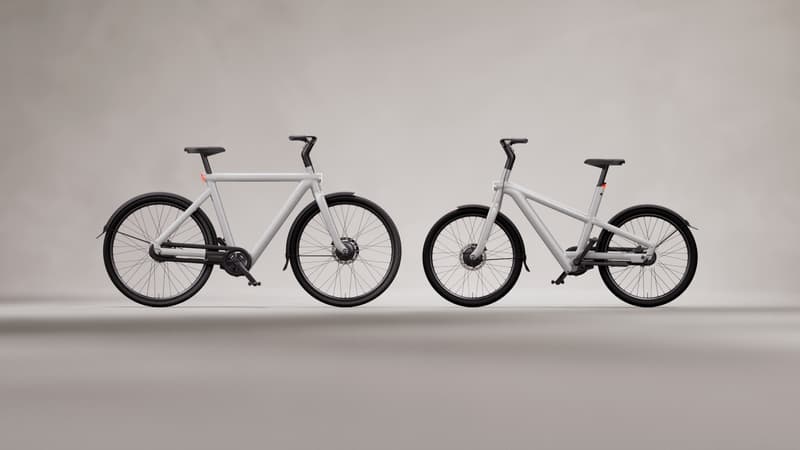Vanmoof is reborn from the ashes. This Dutch premium and connected electric bike brand had enjoyed significant success before going bankrupt last summer. Since it was acquired by McLaren Applied and its subsidiary Lavoie, specialized in mobility, Vanmoof returns this year.
“We have just come out of the restructuring phase, we have spent the last few months reorganizing the company to be lean, efficient and aligned with our plans for the future which are quite exciting,” Eliott Wertheimer, co-president of Lavoie and this new Vanmoof at BFM Business.
A young, but already strong brand
The manager insists on the importance of “reestablishing trust” with its users, after some setbacks experienced in the context of the end of the brand: application not available although it is essential to interact with this motorcycle, problems finding repairers and spare parts… .
The opportunity also to return to this episode and what sparked the interest of the Vanmoof buyer: “We knew that the brand was strong, it was a brand that we loved. At McLaren Applied and Lavoie we were creating premium electric scooters with the desire to launch as well with electric bicycles with the same approach,” explains Eliott Wertheimer.
“An approach focused on design and functionality, with the customer as the highest priority, that is, we are committed to minimalism at the service of the user.”
An interesting opportunity for Lavoie to recover an actor founded in 2009 and who already enjoyed a very positive image among the public. “For us, Vanmoof was one of the only brands that had this similar approach (…) a very strong brand, much more than we thought, with a very fanatical and very resistant customer base despite the problems of delivery, reliability and even quality. . that takes years to create,” summarizes Eliott Wertheimer.
Lessons from failure
Another important asset of Vanmoof: internally developed technologies. Whether it was the mechanics of the bikes, the internal software of the bike called firmware, the apps, all the systems and infrastructure behind the apps, it was 3 to 4 years ahead of anything we had seen in the industry,” he stresses. the manager. A huge saving of time and money for the Vanmoof buyer.
But despite these advantages, how can we explain Vanmoof’s decline? For Eliott Wertheimer, the problem came mainly from the too low margins generated by the company: “They were bicycles that were sold at a loss, I think with the desire to maximize volumes” to popularize the brand. Guaranteed popularity, but “a constant loss of money.”
Other issues: “below industry” reliability, citing “manufacturing and design errors.”
“Many users didn’t have any problems, but many had too many,” he laments.
As for repairability, costs could also skyrocket with these design issues. Long-term interventions for fairly trivial problems.
With this long-awaited return, Vanmoof promises to seek to restore trust, maintaining the solid foundations of the brand.
Source: BFM TV


